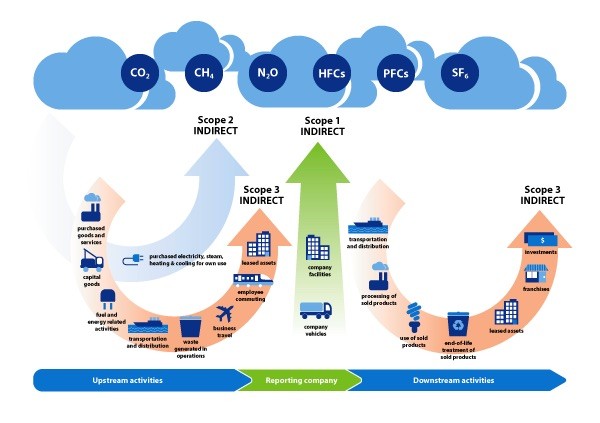First the good news. With the term ‘Net Zero’ carbon emission targets have finally become a globally accepted rallying cry that is helping corporations set out a sustainable business pathway. The bad news is that there remains continuous self-interest politicization of climate change action by governments’ being witnessed especially here in Australia.
While I hold strong views on the lack of current progress on real reductions to carbon emissions, and generally the mess we are making of the planet, this is not the place to overly share. So, let’s stay with the positive.
Unfortunately, meeting Net Zero targets is complex, time-consuming and is also a major business challenge whose importance will only increase as things continue to heat up.
So, to help people who are not currently directly working in the sustainability division of the company I have structured this guide into three parts. This will assist the marketing community to better rewrite their strategies to support Net Zero targets.
1. Explaining the language around Net Zero Carbon Emissions.
To get you started, I have translated into marketing terms the standards and reporting requirements covering Net Zero Targets which are by necessity detailed.
2. How Corporations are Structuring and Communicating their Net Zero Targets.
In the second article in this series, I explain what’s included and what is not, the pitfalls and the way this affects marketing. And why marketing has its part to play beyond managing brand reputation and what possible outcomes you could be aiming for. I will also give examples of how corporations are speaking about their targets and what this actually means.
3. The Dos and Don’ts of Marketing Activity within Net Zero Targets.
This final article is a guide to help marketing professionals ensure that marketing spends, and importantly, the engagement strategy is aligned to the company’s environmental sustainability Net Zero goals. We will conclude by outlining the opportunities that are available to all forward thinking marketing practitioners. This includes why lowering carbon emissions in your supply chain will lead to better targeting and therefore better value from your budget.
So, let’s start at the beginning with the first of the three articles where I will explain the language around Net-Zero.
What are Net Zero Targets?
We read and hear every day about the setting and importance of Net Zero 2030 or 2050 Carbon Emission Targets. The other term that is being used is Carbon Neutral (by a certain date). Companies are setting neutrality targets for a specific site, product, product portfolio or other boundaries. For instance, Daimler AG states that it aims to reach carbon neutrality by 2039 for its car division (Mercedes-Benz Cars), including a new carbon-neutral passenger car fleet. We will return to this statement in our next article and examine what does this not include?
The go-to definition of Net Zero Emissions is from the IPCC (Intergovernmental Panel on Climate Change) which defines Net Zero as that point when “anthropogenic emissions of greenhouse gases to the atmosphere are balanced by anthropogenic removals over a specified period”
All well and good from a scientific standpoint but what does it mean to reach Net Zero emissions at the corporate level?
Let’s look for this definition, one that the sustainability teams refer to, in the work being done by the Science-Based Targets Initiative (SBTi) being:
‘To reach a state of net-zero emissions for companies consistent with achieving Net Zero emissions at the global level in line with societal climate and sustainability goals implies two conditions:
- To achieve a scale of value-chain emission reductions consistent with the depth of abatement achieved in pathways that limit warming to 1.5°C with no or limited overshoot and;
- To neutralise the impact of any source of residual emissions that remains unfeasible to be eliminated by permanently removing an equivalent amount of atmospheric carbon dioxide.’
Let me paraphrase that for you.
To achieve, not just claim, Net Zero, you need to do two things:
Reduce your carbon emissions as much as you can within your business. This includes up and down the supply chain.
And with what you can’t reduce, find a way to neutralise emissions which are commonly done by purchasing carbon offsets to the value of the remaining carbon in the business.
There’s plenty of detail on the SBTi site if you want to delve deeper into the requirements.
What Types of Carbon Emissions Affect your Business?
One of the first challenges when setting any future target e.g., Net Zero 2030, is defining what is the boundary that you are drawing around your business for the current and future measurement of carbon emissions.
If I get someone else, outside of your business structure, to do your business work, shouldn’t they be responsible for the emissions?
If this was the case, I can outsource as much as I can, leaving me a very small boundary and then carry on as normal. Just change a few light bulbs to low emitting LED’s, add some recycling bins and buy a Tesla company car. Finally, I can buy a few cheap carbon offsets for the remaining emissions and hang out the green flag. Job done!
While this was common practice 15 years ago (minus the Tesla), it was called greenwashing then, and it certainly is still no good for running a sustainable business, corporate reputation, shareholder value, your societal standing and staff attraction and retention rates now.
To help companies work out the best and most acceptable way to draw this ‘boundary ‘around business activities we are guided by the Greenhouse Gas (GHG) Protocol which separates emissions into three distinct areas, or ‘Scopes’. These are standards that allow everyone to work in the same manner to reach a verifiable target.
Scope 1 – emissions from sources that are directly owned or controlled by the company. Power generators cause emissions from the burning of fossil fuels. Included by businesses who produce their own power.
Scope 2 – emissions that are indirect (includes emissions that result from the generation of electricity, heat or steam purchased by the company from a utility provider). Businesses include these in their carbon emissions count via their power bill i.e., the volume of emissions arising from power usage.
Scope 3 – emissions that are from sources not owned or directly controlled but related to the company’s activities (i.e. all indirect emissions that do not fall into Scope 2. This is everything else. Company cars, travel, staff commuting to your work, and yes, advertising and all your marketing expenditure.

How to Relate this to Business
Firstly, there are areas that fall within your complete control and are clearly your reportable business boundary. All the members of the extended marketing team including internal studios, social teams, PR, corporate affairs, events etc, will fall within your ‘boundary’ and have carbon emissions attributed to them. These emissions come from the team’s power usage while working for you and are defined in both scope 1 and 2.
Then there’s travel and accommodation while your marketing team are working for you i.e. company cars, public transport, air travel (remember that) and accommodation. These emissions are not necessary within your business so sit in the Scope 3 category. All of these carbon emissions can be calculated either by conducting a life cycle analysis (LCA) yourself, using the numerous online platforms for SME’s including PathZero, for larger companies, there are online platforms like Emitwise or by engaging an environmental consultant to assist with a comprehensive LCA.
If your company has already set Net Zero Targets this work will already have been done and guides to reduction strategies will be in place.
Bearing all this in mind, once emissions have been reduced as far as possible the way to reduce the offset-expense would be to cut staffing costs.
A Cautionary Tale
Before we conclude this first article let’s look at the way emissions are calculated for internal marketing staff.
To achieve Net Zero carbons emissions there are three things that need to happen:
- Measure where you are (LCA).
- Implement carbon reduction strategies to reduce these as much as you can.
- The final stage is to offset these remaining emissions to neutralise the balance, giving you a Net Zero position.
As stated, this is going to be an extra cost to the business if not handled correctly. Staff direct and indirect costs have always been included in overall business expenses, but the final offset expense, for emissions not eliminated from the business, could be an unwelcome negative addition to the leger.
This is why we also need to look at external operational efficiencies now so this does not become another added pressure on the marketing budget. Measuring carbon emissions at a macro level, and using simple cost-cutting accounting methods to meet Net Zero Emission Targets, is an even bigger problem when it comes to the Scope 3 emission involving external marketing spend. The good news is that is a way to become less carbon-intensive by understanding your marketing spend at a micro-level.
So, in the next 2 articles, I will explore how Scope 3 emissions are generated by marketing from engagement with your media spend and other agencies and suppliers’ activities on your behalf. We will start next time with ‘How Corporations are Structuring and communicating their Net Zero Targets’ which shows what companies are claiming, how they are communicating this and importantly, what’s missing.
Is your marketing strategy aligned to your company’s sustainability policy? Do you measure and optimise your carbon emissions? Find out how we can help




